Reeth, North Riding of Yorkshire
Up to 1834
There were a number of township poorhouses in the western dales where downturns in the local lead mining industry could cause periodic surges in the numbers requiring poor relief. Arkengarthdale had a poorhouse in operation by 1751, and Melbecks by 1768 (Hastings, 1996). Grinton had a parish workhouse from at least 1752 when the parish registers mention the death of paupers in the establishment. Between 1813 and 1827 Grinton was a member of the Bainbridge Gilbert Union workhouse. Reeth's original parish workhouse was erected in around 1753 on Back Lane.
An 1857 map shows an old workhouse at Arkle Town near Langthwaite, perhaps the former Arkengarthdale workhouse.
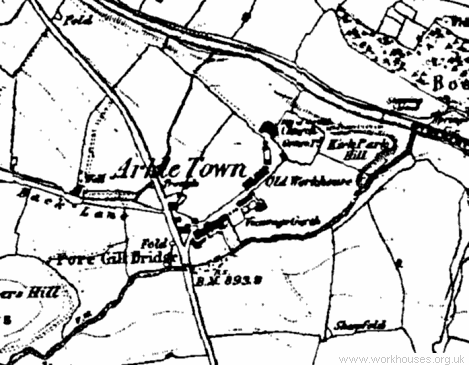
Arkle Town workhouse site, 1857.
After 1834
In 1837, Reeth became part of the new Richmond Poor law Union. However, its remoteness caused travelling problems for paupers, Guardians, and the Relieving Officer, particularly in winter. On occasions, the Guardians for Reeth, Arkengarthdale, Grinton, Marrick and Ellerton Abbey met in Reeth so that relief claimants could avoid the journey to Richmond to have their applications heard.
On 27th April 1840, Reeth became a separate Poor Law Union. Its operation was overseen by an elected Board of Guardians, 11 in number, representing its 7 constituent parishes as listed below (figures in brackets indicate numbers of Guardians if more than one):
North Riding of Yorkshire: Arkengarthdale (2), Ellerton Abbey, Grinton, Marrick, Melbecks (2), Muker (2), Reeth (2).
The population falling within the Union at the 1831 census had been 7,020 with parishes ranging in size from Ellerton Abbey (population 61) to Reeth itself (1,456).
An old mansion, just to the east of the old parish workhouse, was purchased for £700 and converted for use as the Reeth Union workhouse to accommodate up to sixty inmates. Its location is shown on the 1912 map below.
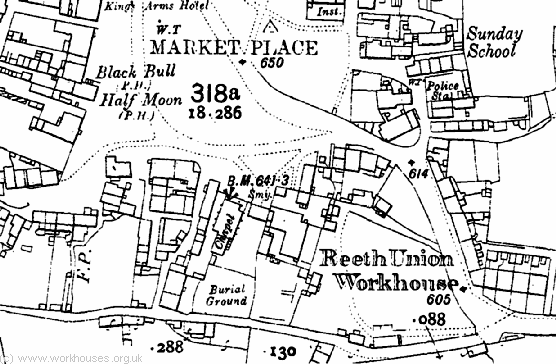
Reeth site, 1912.
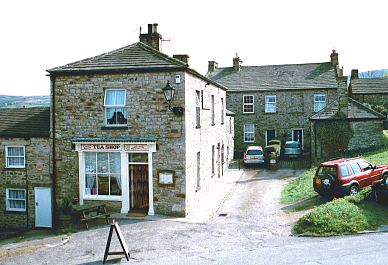
Reeth from the north, 2001.
© Peter Higginbotham.
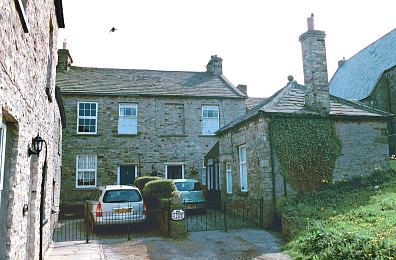
Reeth from the north, 2001.
© Peter Higginbotham.
The Reeth workhouse lacked many of the normal workhouse facilities and, in the daytime, segregation of inmates extended only to separating males and females. Alterations were made in 1845 to separate the sick from the healthy inmates.
The 1857 map identifies a workhouse building at Grinton, presumably its old parish workhouse. It could have been used at this date as an auxiliary workhouse to the main workhouse at Reeth.
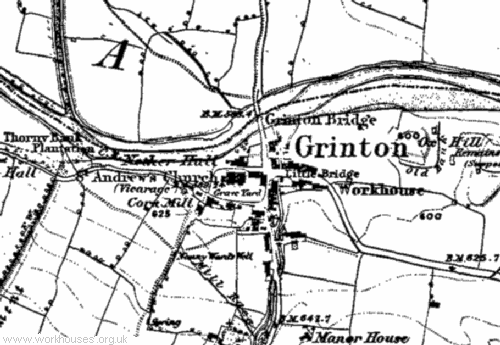
Grinton workhouse, 1857.
At the date of the abolition of Boards of Guardians in 1930, the Reeth workhouse had only six inmates and was closed down.
Part of the former Reeth workhouse building is now (2001) The Copper Kettle Tea Rooms, and the remainder has been adapted for residential accommodation.
Staff
Inmates
Records
Note: many repositories impose a closure period of up to 100 years for records identifying individuals. Before travelling a long distance, always check that the records you want to consult will be available.
- North Yorkshire County Record Office, Malpas Road, Northallerton DL7 8TB. Virtually no local records survive — holdings: Guardians' minutes (1840-56).
Bibliography
- Hastings, P (1996) Richmond and Reeth Workhouses (Ripon Museum Trust leaflet)
Links
- The union's early correspondence with the central poor-law authorities is online on the TNA website .
Unless otherwise indicated, this page () is copyright Peter Higginbotham. Contents may not be reproduced without permission.


